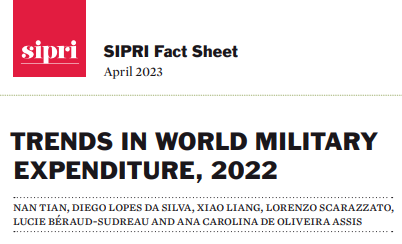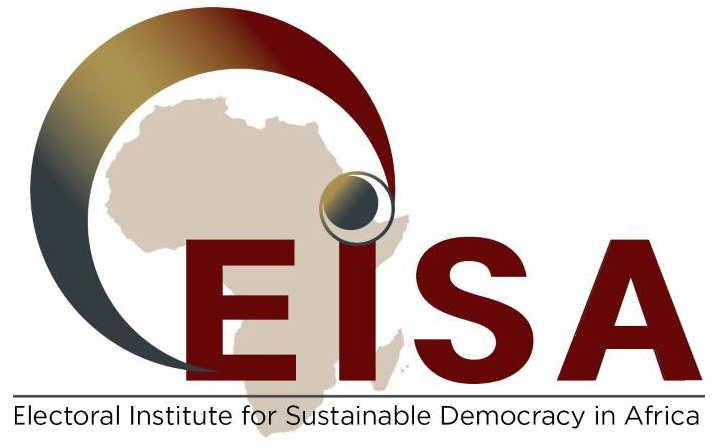The “Trends in World Military Expenditure, 2022” report by the Stockholm International Peace Research Institute (SIPRI) reveals that global military expenditure soared to a record $2.24 trillion in 2022. This marks a 3.7% increase from the previous year, signifying the eighth consecutive year of worldwide military spending growth. This significant uptick is primarily due to large increases in Russia’s and Ukraine’s military budgets.
The United States retained its top spot as the world’s highest military spender, followed closely by China, Russia, India, and Saudi Arabia. In a surprising turn, Ukraine’s military spending jumped to 34% of its GDP in 2022, a substantial rise from the 3.2% observed in the prior year. Moreover, Europe’s military expenditure witnessed a 13% increase over the year, representing the largest annual rise in total European spending since the Cold War.
Importantly, SIPRI’s report supersedes all previously published military spending data, providing key 2022 regional and national military expenditure figures and trend data from 2013 to 2022. The report also shows that global spending grew by 19% from 2013 to 2022, with annual increases since 2015.
Furthermore, the report thoroughly examines the top 40 largest military budgets worldwide, revealing that the United States alone constitutes almost 40% of global military expenditures.
Global Military Expenditure on the Rise:
Several factors contributed to the rise in global military expenditure in 2022. Firstly, border tensions between India, China, and Pakistan were a major factor, evidenced by India’s 6.0% spending increase from 2021 and a 47% increase since 2013. Secondly, the conflict in Ukraine also significantly affected military spending, with Russia’s spending estimated to have increased by 9.2%. Remarkably, Ukraine entered the top 15 for the first time following a staggering 640% increase. Lastly, the SIPRI Fact Sheet also indicates a modest 0.7% increase in the USA’s military spending, totalling $877 billion in 2022, notably including an estimated $19.9 billion in military aid to Ukraine.
Key Drivers of Rising Spending:
Several factors contribute to this significant increase:
- United States: The US remains the world’s largest military spender, responsible for 36% of the global total in 2022. An increase in their budget is attributed to various factors such as current military operations, modernization initiatives, and strategic competition with China. In 2022, the USA allocated $264 billion, representing 30% of its military expenditure, towards modernization and enhancement of its military capabilities.
- China: Coming in close second, China accounts for 13% of global military spending. Its budget has seen substantial growth due to modernization efforts and regional tensions. In 2022, China allocated an estimated $292 billion to its military, which marks a 4.2% increase from 2021 and a 63% rise since 2013.
- Europe: The Russia-Ukraine war prompted a significant increase in military spending among European countries. Germany, the UK, and France declared substantial hikes in their defense budgets, indicating a change in the region’s traditional approach to military expenditure. Military spending in Europe surged by 13% in 2022, representing the most considerable yearly rise in total European expenditure since the end of the Cold War.
- Russia: Despite encountering economic sanctions because of the war, Russia escalated its military expenditure by 2.9% in 2022, indicating its ongoing commitment to military modernization. Russia’s military budget is estimated to grow by 9.2% in 2022, amounting to $86.4 billion, equivalent to 4.1% of Russia’s GDP.
Regional Disparities and Concentration:
In 2022, the top five military spenders were the United States, China, Russia, India, and Saudi Arabia, collectively accounting for 63% of global military expenditure. Despite the overall rise in global military spending, it’s noteworthy that a significant portion remains concentrated within a handful of countries. Specifically, the US, China, and India alone account for over 60% of the worldwide total. This concentration of spending underscores the uneven distribution of military power and raises concerns about potential arms races and regional instability.
Concerns and Implications:
The continued increase in military spending raises significant concerns:
- Global Security and Stability: Rising militarization fuels arms races, increases tensions between nations, and ultimately undermines global peace and stability.
- Resource Allocation: Resources allocated to military spending are diverted from other crucial areas like social development, healthcare, education, and climate change mitigation.
- Increased Risk of Conflict: Growing military capabilities and heightened tensions can create an environment conducive to conflict and escalation.
Key regional trends:
- Europe: In 2022, military spending rose by 13%, marking the largest post-Cold War annual increase. This growth was notably due to increases in Russian and Ukrainian budgets and other European countries. Central and Western Europe’s spending reached a post-Cold War high of $345 billion in 2022.
- Middle East: The military expenditure in the Middle East increased by 4.9% in 2022. Saudi Arabia continued to be the region’s biggest spender. The increase was primarily due to the ongoing conflict in Yemen and tensions with Iran.
- Asia and Oceania: Parts of Asia and Oceania also experienced increased spending contributing to global growth in 2022. China’s military spending rose for the 28th consecutive year, reaching $292 billion. India’s spending increased by 6.0% from 2021 and 47% from 2013. Border tensions between India, China, and Pakistan influenced this military expenditure.
- Americas: In 2022, countries in the Americas collectively contributed to the largest regional share of total global military spending, followed by Asia and Oceania, Europe, and the Middle East.
- Africa: In 2022, the countries in Africa accounted for the smallest regional share of military expenditure, totalling only 1.8% of the global total.
The Need for Change:
Addressing the concerning trend of rising military spending requires a global shift towards peace and development. This can be achieved through:
- International Cooperation: Multilateral disarmament agreements, arms control treaties, and dialogue between nations are crucial for reducing tensions and limiting military spending.
- Investing in Peace and Development: Prioritizing investments in education, healthcare, and economic development can foster greater prosperity and stability, reducing the need for military spending.
- Promoting Non-Military Solutions: Diplomatic solutions, conflict resolution initiatives, and international cooperation can address global challenges like terrorism and climate change without using military force.
While the reasons for this trend are complex, the potential consequences for global security and stability are undeniable. Governments, international organizations, and civil society must work together to reverse this trend and build a more peaceful and sustainable future.




